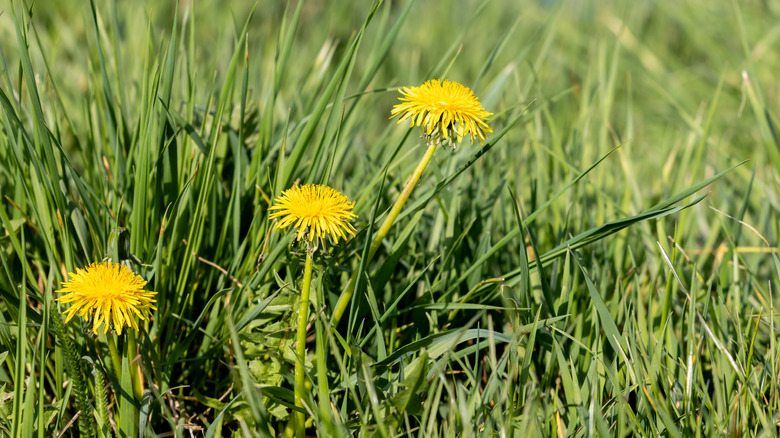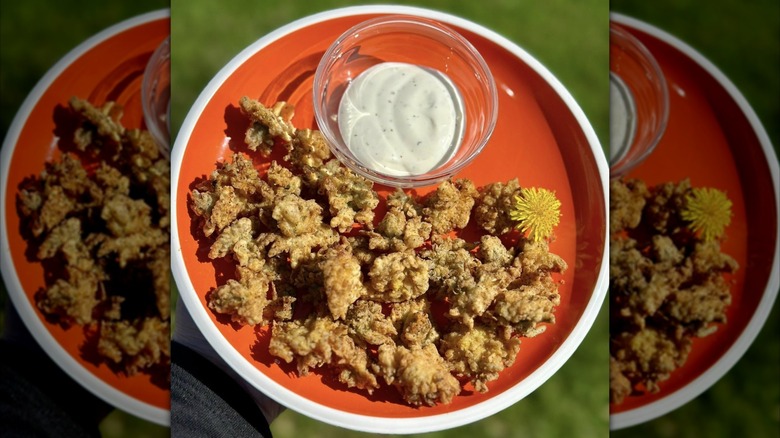Turn Your Unwanted Dandelions Into A Southern Delicacy This Summer
The future of food foraging may find it becoming more mainstream, especially if grocery prices keep rising, but it has been around just as long as humans have. One particularly valuable foraged food source, since every part is edible, is the common dandelion. Many may see these plants as weeds, but instead of ripping them out by the roots and throwing them in the trash, you could turn those dandelion roots into a hot drink reminiscent of coffee or use the petals to flavor a four-ingredient floral syrup. Dandelions can also be made into a tasty appetizer by pulling off the heads and frying them to make a dish thought to have Appalachian roots.
To make fried dandelions, first dip the heads (the flower part) into flour to make a dry surface that will better retain the batter. You'll then coat them with a thinned-down pancake batter that you can either sweeten with honey or sugar or flavor with savory spices such as curry powder. You can also go with a lighter coating by dipping the blossoms into beaten egg and then into seasoned flour. With the battered blossoms, fry them in hot oil for anywhere from one to three minutes, or until they puff up and turn golden brown. If you're making the flour-dipped kind, these should be sautéed in butter or oil for around five minutes. Once your dandelions are cooked, you may eat them as is or dip them into a sauce such as aioli or ranch dressing.
Picking and preparing the dandelions
Before you can make fried dandelions, you'll need to go flower picking. While some cooks insist that only young dandelions be used for a less bitter flavor, others have found that age makes little difference. (As long as you pick the dandelions when they're still yellow, that is, since fried puffballs might be a bit on the dry side.) The dandelions definitely won't taste good if they've been sprayed with weed killer, however, nor will they be safe to eat. The safest place to pick them is your own yard, as long as you haven't used any pesticides. If you must go further afield, stay at least 75 feet from any roads so the flowers won't be contaminated by car exhaust. You should also look for a relatively isolated spot where it appears there hasn't been any upkeep that might involve toxic chemicals.
When you get the dandelions home, you'll need to soak them in a bowl of salted water (use about a tablespoon of salt) to kill any bugs. After 10 minutes, rinse the blossoms in cool water. The soak and rinse should also help get rid of any urine residue, in case you have pets that make use of your yard. Remove any green tendrils behind the dandelion petals, leaving only the bit that holds them together. Allow the flowers to air dry. If you have a salad spinner, it can help speed up the process. Once the dandelions are no longer damp, you may proceed to coat and fry them.

